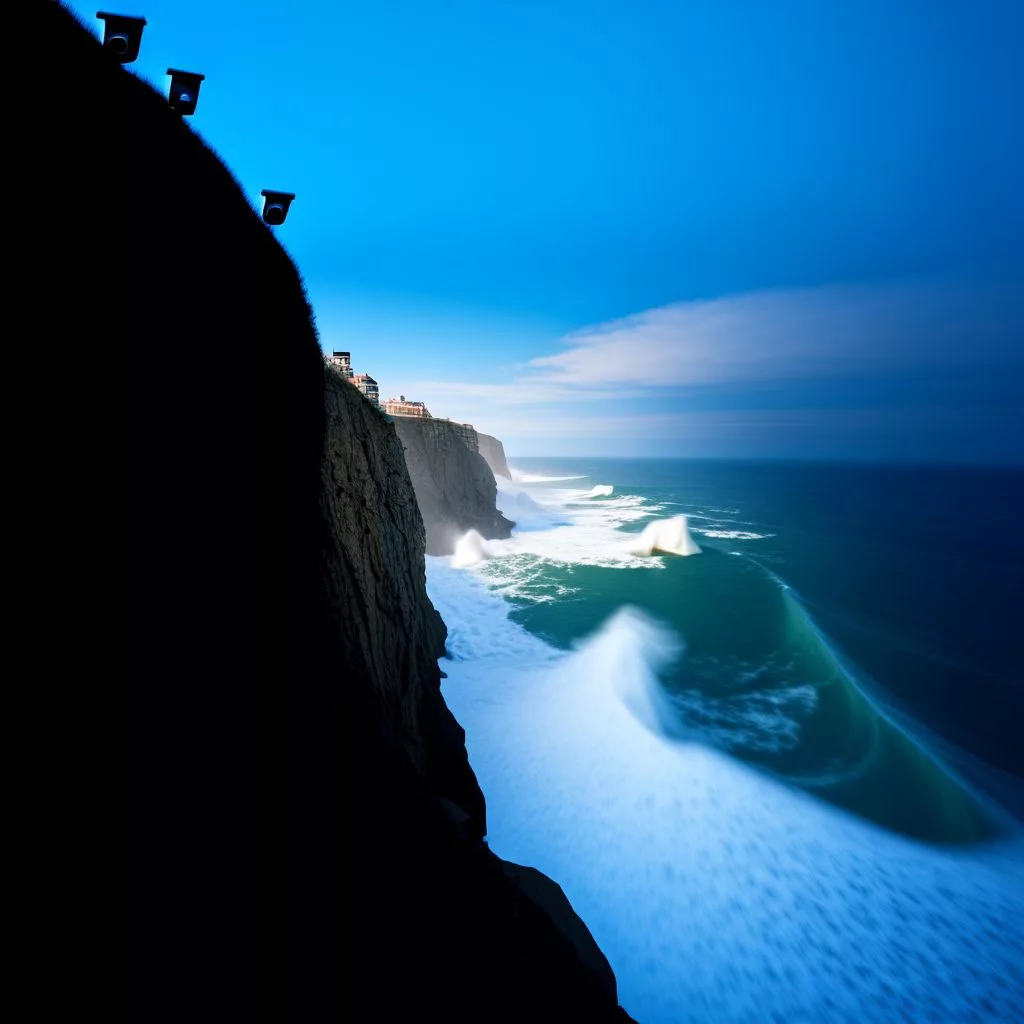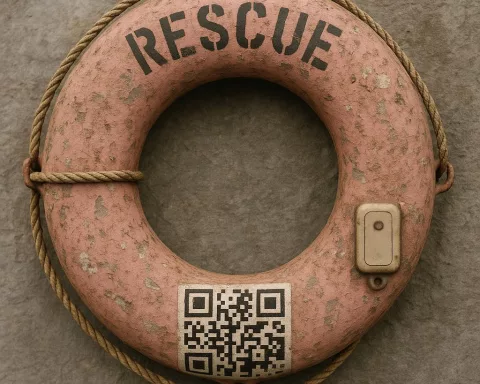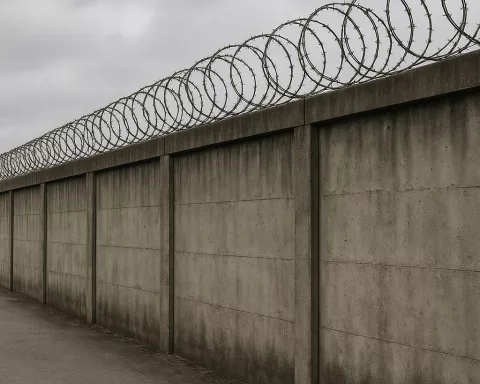The NSRI’s Beach Safety Camera Network is making South Africa’s beaches safer by watching six risky spots with live video and trained watchers. These cameras spot trouble fast, helping rescuers jump into action before things get worse. The system respects people’s privacy and brings communities together to protect beachgoers. Thanks to this smart mix of technology and teamwork, more lives are being saved along the beautiful but sometimes dangerous coast.
How is the NSRI’s Beach Safety Camera Network improving coastal rescue in South Africa?
The NSRI’s Beach Safety Camera Network enhances coastal rescue by monitoring six high-risk beaches with live feeds, trained operators, and real-time alerts. This technology enables faster response to emergencies, improves swimmer safety, respects privacy, and fosters community collaboration along South Africa’s coastline.
Coastal Beauty and the Challenge of Safety
South Africa’s southern coastline stretches for hundreds of kilometers, marked by stunning beaches, rolling surf, and an atmosphere that draws visitors year-round. Yet, beneath the picturesque surface, the ocean hides unpredictable hazards. Powerful rip currents, shifting tides, and sudden weather changes create a complex landscape where enjoyment and danger coexist. For decades, communities and local authorities have grappled with the question of how to protect those who flock to these shores.
As coastal towns have grown and seaside tourism has expanded, the responsibility for safety on the beaches has grown as well. Lifeguards and rescue services have worked tirelessly to minimize tragedies, but the vastness of the coastline and the variety of risks make their task daunting. The National Sea Rescue Institute (NSRI), established in 1967, has long stood at the forefront of these efforts, combining volunteer spirit with professional training and a deep sense of duty. Now, a new chapter has begun, weaving technology into tradition to address the age-old challenge of keeping beachgoers safe.
In response to increasing incidents and the evolving dynamics of beach safety, the NSRI decided to harness the power of technology to bolster its efforts. This approach recognizes that innovation, when guided by experience and local knowledge, can make the coastline not only safer but also more welcoming for everyone who visits.
Strategic Deployment: Where Data Meets Geography
The NSRI’s Beach Safety Camera Network stands as a testament to careful planning and meaningful investment in public safety. Rather than scattering cameras at random, the NSRI undertook a comprehensive review of past rescue operations, ocean current patterns, and public usage statistics. Their analysis identified six beaches where the risks are highest and the presence of extra surveillance could make the greatest impact: Strand Beach, Blouberg Beach, Herolds Bay, Kleinmond, Plettenberg Bay, and Buffelsbaai.
These choices reflect more than just numbers on a spreadsheet. Each of these locations tells a story of near-misses, heroic rescues, and the unpredictable nature of the sea. Some, like Plettenberg Bay and Blouberg Beach, are famed for strong currents and busy crowds, while others such as Buffelsbaai and Herolds Bay face unique challenges from shifting sandbars and sudden weather changes. The NSRI’s use of historical data and local expertise ensures that the cameras watch over the most vulnerable stretches of coastline, turning technology into a targeted guardian.
The camera installations themselves merge seamlessly into the environment. Mounted in unobtrusive positions and engineered to withstand harsh coastal conditions, they provide a continuous live feed of the beach and surf zones. This real-time perspective allows for instant detection of incidents and a proactive approach to monitoring shifting hazards throughout the day.
Training for Vigilance: The People Behind the Cameras
At the core of the Beach Safety Camera Network lies not just technology, but a team of dedicated operators. Each camera is monitored by trained personnel who receive thorough screening and extensive instruction in both beach safety protocols and the technical workings of the system. These operators often include seasoned NSRI volunteers and professional staff, all united by a commitment to safeguarding lives.
Their daily routine goes far beyond passive observation. Operators must interpret subtle signals: a swimmer drifting into a rip current, a sudden commotion among surfers, or the telltale signs of distress. The NSRI’s emphasis on rigorous training ensures that these observers can distinguish between normal beach activity and situations that demand immediate response. When they spot trouble, they coordinate instantly with on-the-ground lifeguards and rescue teams, passing critical information that can shave precious seconds off response times.
This blend of human skill and technological support has already proven its worth. In April 2024, for instance, a camera operator at Strand Beach noticed a small child struggling in the waves. The rapid relay of information enabled a lifeguard to intervene within moments, saving the young boy’s life. A similar scenario unfolded on December 27th of the same year, where an archived camera feed helped rescuers react to a swimmer in distress before the situation escalated. These incidents highlight the life-saving power that comes from combining watchful eyes with advanced tools.
Balancing Safety and Privacy: Building Public Trust
As the camera network has expanded, the NSRI has remained sensitive to concerns about privacy and surveillance. Many people worry that surveillance technology, even in public spaces, could infringe on their personal freedoms or create a sense of constant scrutiny. The NSRI has addressed these challenges through a series of careful design choices and operational guidelines.
All cameras are set up to avoid viewing private property, using digital masking to block out homes, apartments, and any non-public areas. The footage they capture is stored in secure archives and is only reviewed in response to specific incidents, rather than being open for general observation. This approach prioritizes the privacy of individuals while ensuring the vital goal of public safety is met.
Open communication with local communities has also proven essential. The NSRI regularly engages with beachgoers, homeowners, and local authorities to explain how the system works and to seek feedback. By demonstrating transparency and a strong ethical framework, they foster trust and support for their initiatives, ensuring that the camera network serves the public interest without overstepping boundaries.
Innovation, Collaboration, and Recognition
The Beach Safety Camera Network represents more than just a collection of digital eyes on the shoreline. It stands as a symbol of South Africa’s commitment to blending tradition with progress, drawing on the lessons of the past while embracing the possibilities of modern technology. Nowhere is this spirit more evident than in Plettenberg Bay, where the network links seamlessly with the Shark Alarm System. This integration lets operators and responders issue immediate warnings when dangerous marine life is spotted, adding another layer to the region’s emergency preparedness.
Collaboration is the lifeblood of the NSRI’s approach. Volunteers, professional lifeguards, local authorities, and community members all play vital roles in the success of the camera network. Their combined efforts have attracted international attention, with the project earning second place at the 2023 International Maritime Rescue Federation Awards for Innovation and Technology. This global recognition highlights how South African ingenuity is helping to set new standards for coastal safety around the world.
Looking ahead, the NSRI’s work offers valuable lessons for any community facing the challenges of natural hazards and public safety. By investing in both people and technology, maintaining open dialogue with the public, and fostering a culture of continuous learning, they illuminate a path forward that is both effective and respectful of local values.
The Future of Beach Safety: A Shared Responsibility
The introduction of the Beach Safety Camera Network has already changed the rhythm of life along South Africa’s shores. Swimmers, surfers, and families enjoy a greater sense of security, knowing that help is always close at hand. Lifeguards and rescue crews benefit from an extra layer of support, enabling them to focus their attention where it is needed most.
Yet, the real strength of this initiative lies in its adaptability. As technology evolves and new risks emerge, the NSRI remains committed to refining its approach and expanding its reach. The story of the camera network is not just about innovation, but about partnership—a recognition that keeping the coast safe is a shared responsibility, linking technological progress with personal commitment and community spirit.
Ultimately, the NSRI’s efforts remind us that the ocean’s beauty and unpredictability are inseparable. By blending vigilance, empathy, and innovation, South Africa continues to honor its timeless connection to the sea, striving to make every beach a place where both joy and safety can thrive.
What is the NSRI’s Beach Safety Camera Network?
The NSRI’s Beach Safety Camera Network is a system of live video cameras installed at six high-risk beaches along South Africa’s coast (Strand Beach, Blouberg Beach, Herolds Bay, Kleinmond, Plettenberg Bay, and Buffelsbaai). These cameras are monitored by trained operators who watch for signs of distress or dangerous conditions, enabling faster rescue responses. The network combines technology with human vigilance to improve beach safety, helping to save more lives while respecting privacy.
How does the camera network improve rescue response times?
By providing continuous live video feeds monitored in real-time, the network allows trained operators to quickly spot swimmers or surfers in trouble, rip currents, or sudden hazardous changes. This early detection means rescue teams can be alerted and deployed immediately—often before a situation worsens. For example, in April 2024, a quick camera alert helped save a child struggling in the waves at Strand Beach. The system shaves precious seconds off rescue efforts, which can be critical to saving lives.
How does the NSRI ensure privacy with constant beach surveillance?
The NSRI carefully balances safety with privacy by positioning cameras to avoid private properties and employing digital masking to block views of homes or non-public areas. Footage is securely stored and only reviewed when an incident occurs, rather than being continuously watched or made publicly accessible. The NSRI also communicates openly with communities to build trust and explain the purpose and safeguards of the camera network, ensuring that the system respects individual privacy while enhancing public safety.
Why were these six beaches selected for camera installation?
The six beaches monitored—Strand Beach, Blouberg Beach, Herolds Bay, Kleinmond, Plettenberg Bay, and Buffelsbaai—were chosen based on detailed analysis of past rescue incidents, local ocean current patterns, and public usage statistics. These locations are known for strong rip currents, shifting sandbars, sudden weather changes, or heavy visitor numbers, making them particularly hazardous. The NSRI’s data-driven approach ensures cameras are placed where they can have the greatest impact on preventing drownings and other emergencies.
Who monitors the cameras, and what training do they receive?
Cameras are monitored by a dedicated team of trained operators, including experienced NSRI volunteers and professional staff. These individuals undergo rigorous training in beach safety protocols, emergency recognition, and technical operation of the camera system. Their role involves actively interpreting live footage to identify potential dangers such as swimmers caught in rip currents or other distress signals. When they detect trouble, operators coordinate instantly with lifeguards and rescue teams to prompt swift action.
What future developments are planned for the Beach Safety Camera Network?
The NSRI is committed to evolving the camera network as new technologies and challenges arise. Plans include expanding coverage to additional high-risk beaches, integrating with other safety systems like the Shark Alarm System in Plettenberg Bay, and continuing to refine operator training and community engagement. This ongoing innovation aims to strengthen the partnership between technology, rescuers, and coastal communities, ensuring beaches remain safe and welcoming places for everyone now and in the future.









